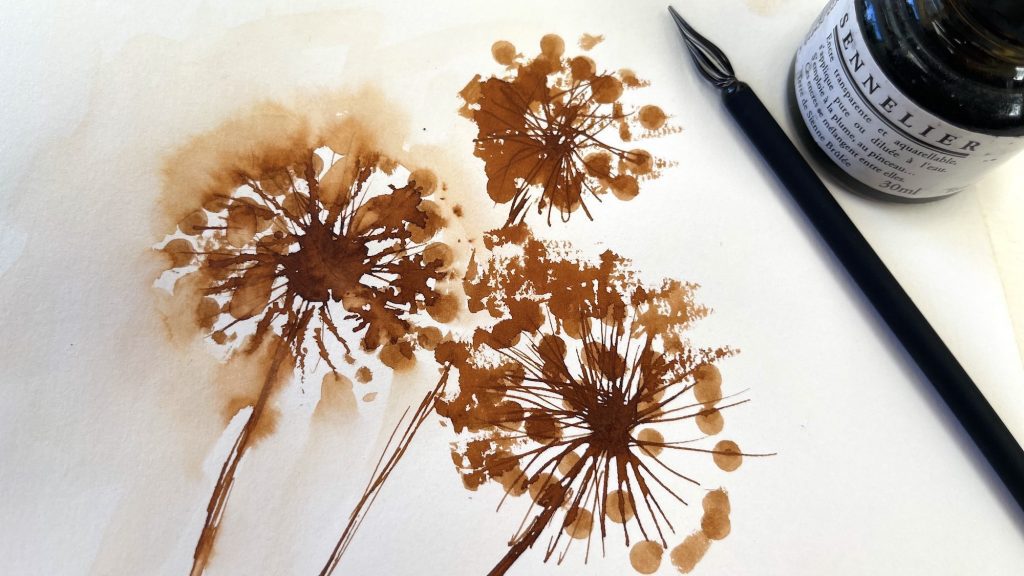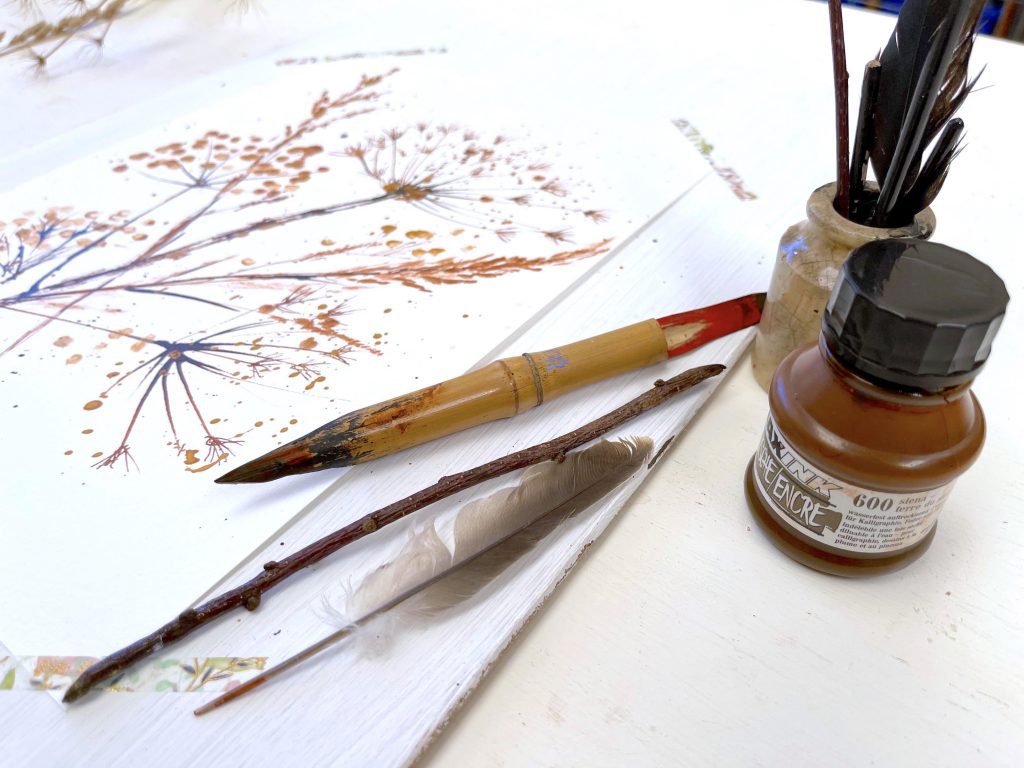Seeds and their cases and pods are hugely varied and fascinating subjects to draw and paint. When sketching seeds and grasses, scratching, spattering and printing, as well as drawing with different implements, all offer techniques to explore as you experiment with these autumnal subjects. No need to labour over fine detail to render these subjects – loose texture making will often give a more convincing appearance to your painting than meticulous brushwork ever can.

Sketching Seeds and Grasses with Found Objects
For this loose sketch I chose to use some simple found objects as drawing implements, as well as a bamboo pen and a simple glass dip pen. A pointed stick, a cut up credit card, a feather or a Q-tip all come into play in this drawing.

Techniques for sketching seeds and grasses
You can paint grasses and stems and stalks simply using single or multiple strokes of a simple dip pen. I used the bamboo pen to give a roughened random appearance to the stems of these old dried seeds and grI asses. You could also use a rigger brush or any other brush you have handy to do this with.
I used a small square flat brush to stipple the seed heads on the soft grasses with diluted ink. I also used Q-tips (cotton buds) to print the round shapes of some of the seeds.
To give extra richness to the sketch I did use something unusual – gold paint from Kuretake, which I spattered on the finished drawing with a rigger brush, and also dabbed on in places with a Q-tip. You could use many other methods of introducing gold colors to your your painting, such as gold gel pens or iridescent medium.
The paper I used is Clairefontaine Etival 140lb watercolor paper. A 100% cellulose paper which is more suitable for beginners than 100% cotton papers as it takes a lot of abuse and corrections can be easily made on this paper.
I have put links here to the materials I used and recommend so you can find them easily on Amazon.